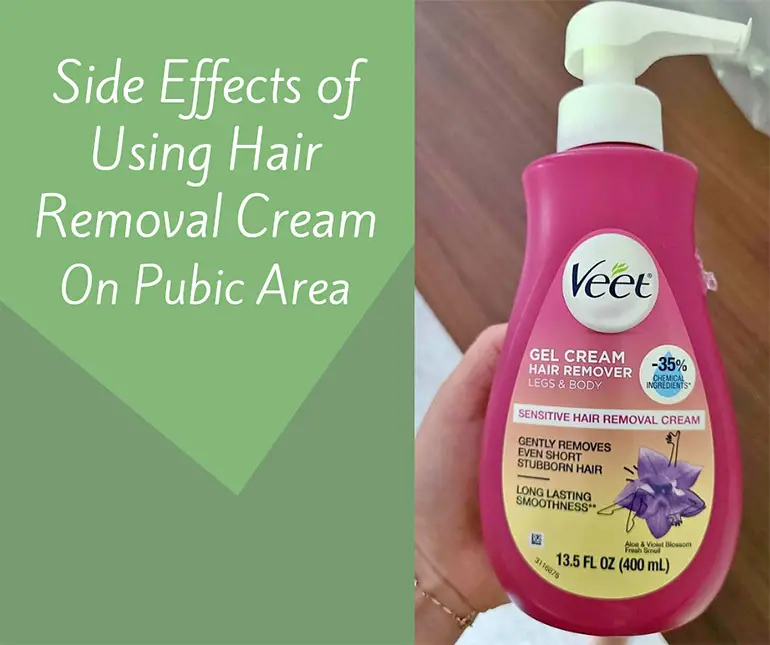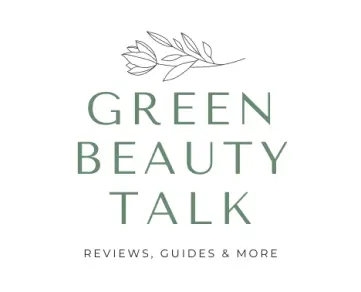
If you’ve ever wondered about alternative methods for removing unwanted hair down there, you’re not alone. I’ve decided to tackle another subject that many are curious about—using hair removal cream on the pubic area. Yes, we’re going there.
These creams offer a convenient alternative to razors and waxing, but are they safe, especially for such a sensitive region? What sort of chemicals are we exposing ourselves to, and what are the potential side effects of using hair removal cream in our intimate areas? With these pressing questions, it’s time to pull back the curtain and take a closer look. So, let’s get into it.
Table of Contents
- Why People Use Hair Removal Creams
- Common Ingredients in Hair Removal Creams
- How Hair Removal Creams Work
- Potential Side Effects
- Side Effects Specific to Pubic Area
- Expert Opinions
- Comparisons with Other Hair Removal Methods
- Tips for Safe Use
- Summary
- FAQs
Why People Use Hair Removal Creams
Let’s face it, grooming and personal care have evolved, and hair removal is no longer just a ‘shave or wax’ conversation. Enter hair removal creams, the convenient, less painful cousin in the family of depilatory methods. But what’s all the buzz about?
For one, using a cream can be a lot less intimidating than holding a razor blade to your skin, especially in the sensitive pubic area. The application is as simple as ‘spread and wait’, a welcome relief for those who find themselves more prone to razor burns or the uncomfortable aftermath of waxing. Besides, who wants to deal with cuts or the incessant itching that often follows shaving?
And let’s not even get started on waxing—a method that’s not for the faint of heart. The hot wax and subsequent ripping action is enough to make even the bravest wince. Then there are other, more permanent, methods like laser hair removal, which require multiple sessions and can be a dent in your wallet.
So, it’s easy to see why hair removal creams have become an attractive option for many. They offer a middle ground: less painful than waxing, yet potentially more effective than shaving, all without breaking the bank. But are they too good to be true? We’re about to find out.
Common Ingredients in Hair Removal Creams
When we turn our attention to what’s inside these creamy concoctions, things start to get a little more, let’s say, ‘chemical’. But knowing what you’re slathering on your skin, especially in areas as sensitive as the pubic region, is crucial. So, what’s in the tube?
- Calcium Thioglycolate and Potassium Hydroxide: These are the big players that actually break down the hair. They dissolve the protein structure of your hair, essentially turning it into jelly for easy removal. Sounds cool, but also slightly terrifying, right?
- Cetearyl Alcohol and Stearyl Alcohol: These fatty alcohols are not the drying kinds you might find in your hand sanitizer. They’re here for texture and to help the formula spread more easily.
- Aloe Vera and Vitamin E: You’ll often find these ingredients in creams geared towards sensitive skin. They act as soothing agents, aimed to reduce irritation.
- Parfum or Fragrance: Because no one wants their hair removal process to smell like a chemistry lab, most formulas include fragrance. However, this is where things can get tricky for sensitive skin, as fragrances can be irritating.
- Parabens: Ah, the notorious preservatives that many are wary of due to their controversial reputation. They keep the product shelf-stable but have raised some health concerns.
- Mineral Oil: This common ingredient locks in moisture but can be a double-edged sword. It creates a layer over the skin, making it feel soft but potentially clogging pores in the process.
So, what’s the verdict? Hair removal creams are a cocktail of active ingredients aimed at efficient depilation, coupled with soothing agents and other additives to make the experience less of a chore. But the question remains—how does all of this interact with one of the most sensitive areas of our body? Let’s delve deeper.
How Hair Removal Creams Work
Hair removal creams—also known as depilatories—work by breaking down the structural protein, keratin, in your hair. Imagine each hair as a mini skyscraper of keratin, and the cream is like a wrecking ball made up of calcium thioglycolate and potassium hydroxide.
Once you slather the cream onto the targeted area, these active ingredients swing into action, degrading the keratin and causing the hair to lose its structural integrity. The result? Hair that can be wiped away as easily as jelly off a spoon.
But let’s pause for a second. The pubic region is not like your leg or arm. The skin here is more sensitive, thinner, and let’s face it—generally a no-go zone for anything remotely harsh. So, while the idea of painless hair removal is tempting, it’s crucial to remember that the stakes are higher when dealing with intimate areas. It’s akin to navigating a chemical ballet, where each step must be executed with the utmost care to avoid turning the performance into a disaster.
Thus, understanding the mechanics of hair removal creams is not just a nerdy side quest—it’s essential knowledge for anyone contemplating using these products on delicate skin. Are you still with me? Great, because we’ve got more ground to cover.
Potential Side Effects
Before you leap into the creamy abyss, we’ve got some real talk coming up. While these creams can seem like a magic eraser for unwanted fuzz, they’re not without their risks, especially when you’re venturing into sensitive territory. Let’s explore the not-so-rosy side of things.
Skin Irritation and Allergic Reactions
We’ve all heard the phrase, “Your mileage may vary,” right? In the realm of hair removal creams, this couldn’t be truer. Some folks might use them with zero issues, while others might experience redness, itching, or even hives. Think of your skin as a unique ecosystem; introducing a foreign substance, like a cream with various chemicals, might disrupt its natural balance.
Chemical Burns
Don’t let the term “cream” lull you into a false sense of security. We’re dealing with chemicals potent enough to dissolve hair here. A misstep in application—say, leaving it on too long—could result in a chemical burn. Imagine the discomfort of a sunburn, but escalated, and in a very uncomfortable spot.
Imbalance in Skin’s pH Level
Our skin has a certain pH level that it likes to maintain for optimal health. Hair removal creams can throw that balance off kilter, leading to dryness or, in more severe cases, contributing to conditions like eczema. It’s the skincare equivalent of a seesaw that’s suddenly become unbalanced.
Ingrown Hairs
By weakening the hair to the point where it can be wiped away, hair removal creams can sometimes cause the remaining hair to curl back into the skin as it regrows. Hello, ingrown hairs! These little nuisances can be painful and may even lead to infection.
Longer-term skin effects
While the jury is still out on long-term consequences, repeated exposure to the chemicals found in hair removal creams could potentially lead to skin thinning or increased sensitivity over time.
Side Effects Specific to Pubic Area
Alright, we’ve navigated the general red flags, but let’s zoom in on the potential pitfalls unique to the pubic region. This area isn’t just sensitive; it’s the sensitive capital of the body. So, what could possibly go wrong?
Increased Sensitivity
It’s one thing to risk a little irritation on your leg; it’s quite another to invite that discomfort into your most delicate area. The skin here is thinner and more sensitive, making it far more prone to the adverse effects we’ve discussed earlier. Increased sensitivity could mean anything from mild irritation to significant pain. Tread carefully, my friends.
Risk of Urinary Tract Infections (UTIs)
Here’s one you might not have thought of: UTIs. Chemicals don’t discriminate; they can migrate from your skin to other parts of your anatomy, including the urethra. If you’re prone to UTIs, you may want to think twice before employing a hair removal cream in your nether regions.
Sexual Health Risks
The chemicals in hair removal creams can stick around longer than you’d like, and this lingering presence could spell trouble for your intimate life. Those residual chemicals could not only irritate you but also a sexual partner. Moreover, if you have small cuts or nicks (which are more likely if you’re also shaving), the chemicals could enter your bloodstream, though this is relatively rare.
So, as you contemplate this hair removal venture, give a nod to the special considerations your pubic area demands. It might save you from some decidedly awkward, or painful, situations. And if you’re not deterred, stay tuned. We’ve still got practical advice up our sleeves for those who want to proceed, but wisely.
Expert Opinions
Now, before we proceed down this hairy path, let’s pause and tap into some wisdom from those in the know—dermatologists and medical experts. Trust me, their advice could be the difference between a smooth experience and a regrettable one.
Dermatologists Weigh In
First off, most dermatologists will tell you to perform a patch test before using any hair removal cream, especially on sensitive areas. The idea is simple: apply a small amount of the cream to a less sensitive area of your skin and wait for any signs of an adverse reaction.
Moreover, dermatologists often recommend choosing creams with added moisturizers or aloe vera, as these ingredients can lessen the risk of skin irritation. Products labeled “for sensitive skin” might also be a safer bet, though they are not a guarantee against adverse reactions.
Medical Experts’ Recommendations
Beyond dermatologists, other medical professionals also have a word of caution. Gynecologists, for example, stress the importance of not letting the cream come into contact with the inner labia or other mucous membranes. Doing so could result in chemical burns or, worse, internal issues that require medical intervention.
Physicians emphasize avoiding the use of hair removal creams if you have any existing skin conditions, wounds, or infections. If you’re pregnant or nursing, consult your healthcare provider first.
Minimizing Risks
The consensus is clear: to minimize risks, read the instructions diligently and follow them to the letter. Some experts even advise setting a timer to ensure you don’t leave the cream on for too long, thereby reducing the risk of chemical burns. And always, always, wash off the cream thoroughly with water after use.
By heeding the advice of experts, you’re taking an informed step toward a hair-free existence—without the unwelcome side effects. Stick with us; we’ve got more insights coming up to ensure you make the most informed choice possible.
Comparisons with Other Hair Removal Methods
Before you completely jump on the hair removal cream bandwagon, let’s see how it stacks up against other popular methods—namely waxing, shaving, and laser treatments, especially when it comes to the pubic area.
Waxing
Ah, the rip and pull! Effective but notoriously painful, waxing also runs the risk of causing ingrown hairs and skin irritation. Additionally, hot wax in the pubic area? It’s not everyone’s cup of tea. The skin there is extra-sensitive, so the risks of redness and irritation post-wax are significantly higher.
Shaving
The age-old method of shaving is quick but can be fraught with issues like razor burns, nicks, and again, ingrown hairs. Plus, the hair grows back much quicker, leaving you with stubble that can be itchy and uncomfortable.
Laser Treatments
The most permanent but also the priciest. Laser treatments are usually well-tolerated but can cause some discomfort and minor skin irritation. Plus, you’ll need multiple sessions, and it’s not recommended for everyone, depending on your skin and hair type.
Tips for Safe Use
So, you’ve got the expert lowdown, and you’re still leaning toward hair removal creams? Fabulous! But first, let’s cover some best practices for safe use.
Conducting a Patch Test
Can’t stress this enough: perform a patch test. Apply a small dollop of the cream on a less sensitive part of your skin, wait for the recommended time, and rinse off. Monitor the area for any signs of redness, irritation, or itchiness over the next 24 hours.
Following Manufacturer Instructions
Listen, those instructions on the box are there for a reason. Adhere to the recommended application time to the letter—set a timer if you have to. Overexposure to the chemicals in the cream can result in unpleasant skin conditions like chemical burns.
Considerations for Pregnancy and Sensitive Skin
If you’re pregnant, nursing, or dealing with sensitive skin, consult your healthcare provider before using any hair removal products. Pregnancy can cause skin changes, making you more susceptible to irritation or allergic reactions.
By following these guidelines, you’re not only doing right by your skin but also giving yourself the best shot at a smooth, hair-free experience. The road to a hairless life is fraught with choices but armed with the right information, you can navigate it like a pro.
Summary
We’ve navigated the terrain of using hair removal creams in the pubic area, delving into their ingredients, how they work, and potential side effects. We’ve also heard from the experts and compared this method to other popular hair removal options. The takeaway? Hair removal creams can be a convenient alternative, but like any other method, they come with their own set of risks and considerations.
General Recommendation
If you’re looking for a less painful and quick method for hair removal in the pubic area, creams could be a suitable option. However, the rule of thumb is always to conduct a patch test and follow the manufacturer’s guidelines. Consult with a healthcare provider for personalized advice, especially if you’re pregnant or have sensitive skin.
FAQs
Q: How long do the effects of hair removal creams last?
A: Generally, the effects can last up to a week, but this can vary from person to person.
Q: Can men use these creams too?
A: Absolutely, but it’s crucial to choose a product formulated for male skin, which is generally thicker.
Q: Are there organic or natural alternatives?
A: There are some natural hair removal creams on the market, but they may not be as effective as their chemical counterparts.
Additional Resources
For a deep dive into another popular hair removal method, check out my article on Veet Hair Removal Creams.
Additionally, explore my in-depth analysis of Summer’s Eve Cleansing Wash to understand its effects on intimate health.

Petra Nakashian (previously Kravos) is a dedicated natural health and beauty blogger, driven by the loss of her parents to cancer, which led her to meticulously research beauty product ingredients. With over 10 years of experience, her in-depth knowledge has made her a trusted expert in the field. Founder of Be Healthy Now and Green Beauty Talk, Petra recently expanded her expertise with Beauty Insights Hub, exploring a wider range of beauty treatments. Committed to transparency and honesty, her work is a vital resource for navigating the complex world of beauty.

